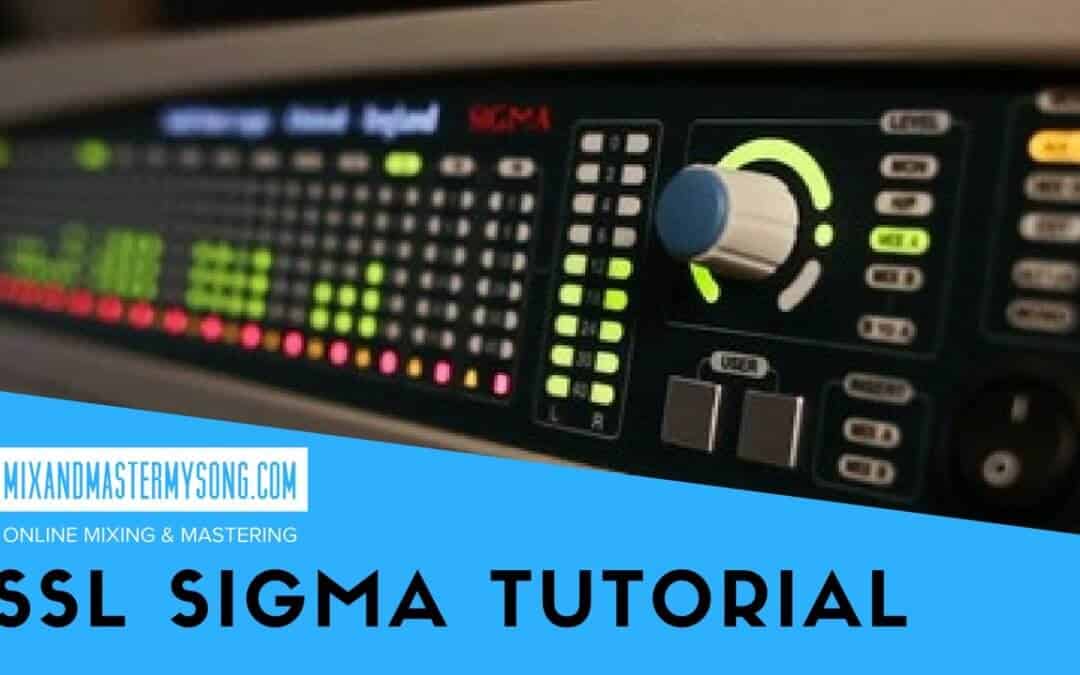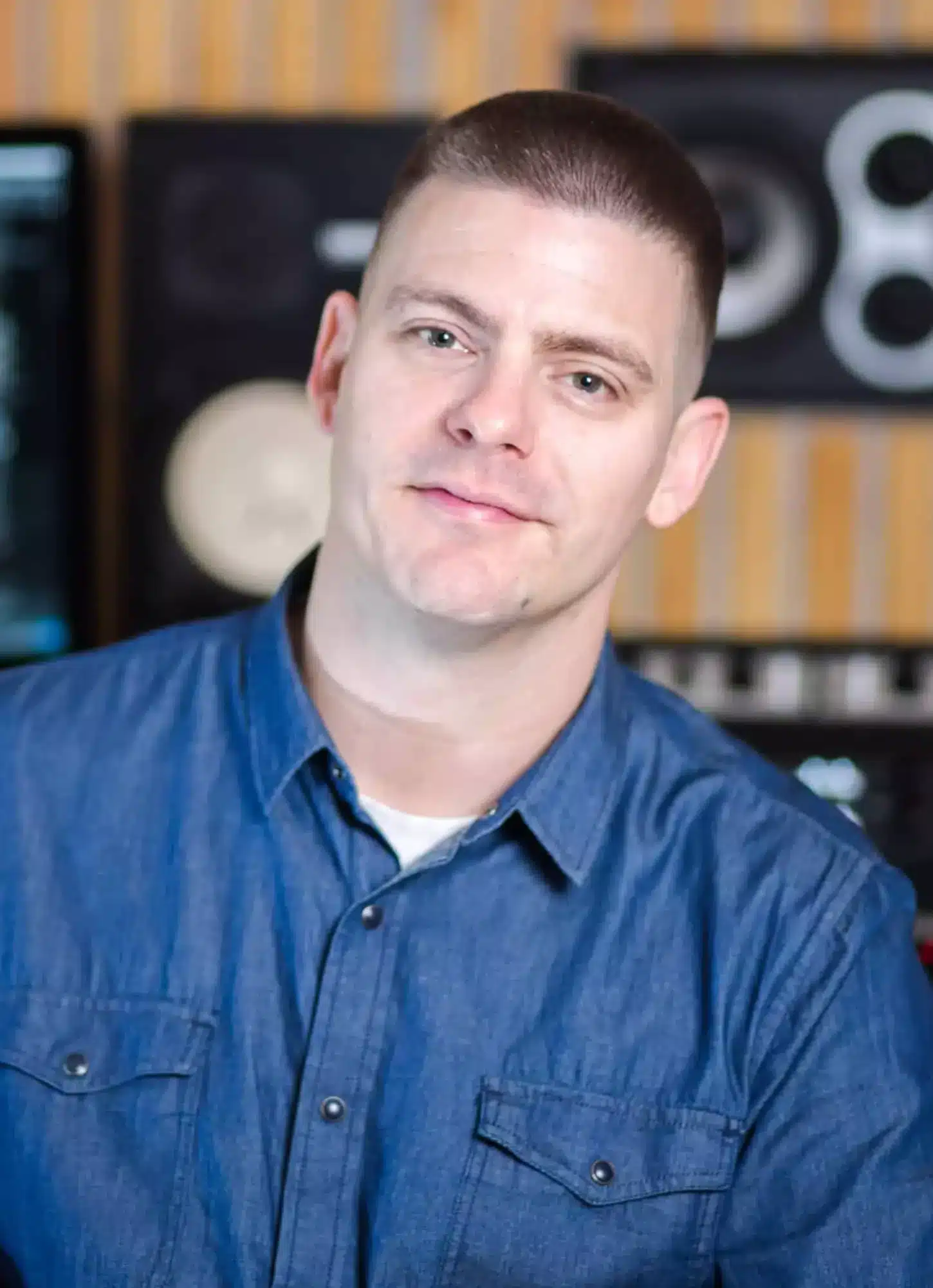Summing is something that is highly debated in most pro audio circles. I personally like it and choose to use the SSL Sigma. To me, it adds a little more width and a high-end extension that makes the music sound a little more “expensive”. In this tutorial, I will go over how I use it and play some before and after examples. Enjoy!
Video Transcript
Hey, its Matty at mixandmastermysong.com. I’ve been asked quite a bit about the summing unit I use and figured it’d be cool to do a little video on it. Basically what I use is the SSL Sigma Summing Mixer, and I say mixer because it is a summing amp where you send stems out of your DAW to it, but it also has a digital mixer built into it. I’m going to show you how I use it and how it works. Then I’ll play you some examples of before and after summing so you can hear what it’s doing. So let’s jump in.
As you can see, this is the digital mixer of the SSL. So if this is all in the analog domain, so this is after it goes out of my DAW, and then I have separate channels for each one of my tracks and I can turn those up or down and that will make it louder pushing to the stereo mix buss of the SSL, which it has two and that comes up on a different plug-in right here. So let me show you first just how I come out of Studio One into the SSL.
Everything in my songs come to these, what is it, eight buses I believe, right? So the first one’s drums which is usually just a kick and snare, then this is a parallel, so you can see this is sending to this channel here and that goes out to the SSL on another two channels. Then we have high percussion which is high hats and cymbals, then kick and snare. This isn’t always used but sometimes what I’ll do is I’ll parallel compress the kick or the snare separately from this parallel, and I’ll want it to have maybe a different sound than just sending it out to drum buss, because a lot of times it’s drum buss I put three or four different plugins on to give it a certain sound. Then I might need more transients or fewer transients or whatever I’m looking for.
So I use this one so I have a clean signal going out to my stereo bus that’s not being compressed or changed or altered from this one. So it’s a little confusing but that’s just kind of how I have it set it up. Then we have bass, so any bass instruments: bass synth, bass guitar, music, which is guitars and synths, and any kind of weird little effect sounds, that’s all going out to the music track. The last two is vocals, all my vocals come out here and then all our effects come out here which could be delays, reverbs, anything that’s been sent to and comes up on a return. You can see all my effects returns here and they’re all going to the effects which is that one.
So that’s basically how they’re all set up and then if you come to the SSL, this is where they are in the analog domain. So they come out of here, out of the apogee symphony, into the SSL, and then come up here. Now, post the DAW, I can change the levels of these here into my mastering chain or just the mix buss depending on what I’m doing. The only kind of strange thing I got here, so the SSL, the way they set this up, you have two different, I guess you could say two different buses, so the A bus and the B bus. So, all of them will go to the A bus which goes out to my mastering chain, analog mastering chain, except for my drums parallel which is going to the B bus.
The reason why that is because I want that … you can see it always default and quite a bit louder, I want that to hit the analog compressor I have as hard as it can. Then that comes up here, I know this is confusing, but as I insert B, and then I send the B bus to the mix A buss, which is the main bus where everything’s going. So now I blend my parallel compression in with this channel, with this fader, into the mix. So hopefully that makes sense to you guys. It’s a little confusing explaining it but that’s about it. So the thing is awesome, and I can do a lot of volume changes in automation at the end of a mix right here and not even have to deal with this because usually, I’m hitting all this at around negative 18. I think I need to change these ones, yeah, but negative 18.
So I don’t want to mess with this going out of my converters. I want to stay at the level of that. So if I need to push it and I can push these a little hard once I get analog, I can push it in there and hit the stereo buss of the SSL a bit harder into my mastering chain. So that’s how it works, hopefully, that makes sense. Just out of the mastering chain, just so you can see the full return, it comes in an aux track back here. That goes to my main channel here and it has a bunch of other plugins that I’ll use to finish up the mastering or what have you. So that’s basically all that.
Now, let’s here … so what I did, because of the way I record my videos here, I can’t actually do the summing live because it’s just the amount of channels that I have. So what I did is I have this little song, the song GPS I mixed, and I just kind of A/Bd it throughout a route. Now, the first part what I did was I looped one bar back and forth, the same bar it plays. It’s a little annoying but to me, looping a smaller amount is a lot easier to be able to hear the difference between something. So this is with summing and this is without summing. So basically I just took the channels and either put them right in the DAW or through the summing, didn’t go through any of the mastering chain, just straight back through.
So, I’ll play it and I’ll tell you, I guess that maybe tell you what I hear and why I like using analog summing. This one to me sounds a bit brighter and more wide open and I can … the soundstage just feels bigger and I get a little more separation. That’s why I use it. Things to listen for when you’re listening to this is the hi-hats. You’ll hear they’re a bit brighter. You also listen to the stereo image. You feel that it comes in just a little bit when we’re listening to the one that did not go through the summing. So its width and high-end brightness. I guess a lot of people say and I agree with it, “The SSL just sounds a little more expensive.”
So anyway, let me play the loop back and forth and then I’ll play the full loop of it going back and forth through the whole part of this song, so here we go. So first with analog then without. If you hear the hi-hat, it almost sounds louder on this one because it’s a little clearer and more defined.
You hear a volume indifference. Then the reverb on the whoo, whoo, I cannot sing, you’ll hear it’s a little bigger and you hear it more defined on the analog. Now, like I said this stuff is not game-changing gear. So don’t think this is some magic box that’s going to change your mix, it just gives you a little bit more.
So, hopefully, you guys hear the difference there. Like I said, it’s subtle, but to me it makes a world of difference. I like going out there, just some records you’ll hear it way more than others, really the busier the stuff gets the more I hear the difference. That to me just helps me give a little more separation, a little more width, a little more like a high-end sheen if you will, and I really dig it. I like to be able to … you can push the master bus on the SSL a bit to get a little more crunch if you want, and I like just getting out of the DAW and then be on the go, analog out into my analog mastering chain. So it works for me, not everyone loves them, some swear by them, but I just thought you’d like to check it out. So that’s it, the SSL Sigma Summing unit I have. If you got any questions hit me up in the comments below and check me out at mixandmastermysong.com for mixing and mastering. Thanks.







Trackbacks/Pingbacks